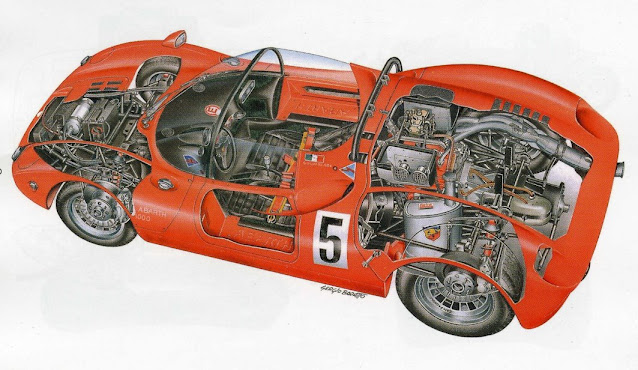Piccolo ma Potente - Abarth 1000 SP

Courtesy of Tony Berni Carlo Abarth’s manager of mechanical, chassis and body development , Mario Colucci, joined from Alfa Romeo following the collaborative Abarth-Alfa 1000 project which culminated in November ’58 with the presentation of a Scaglione-styled version at the Turin Motor Show. This model featured a tube frame chassis, the preference of both Alfa Romeo corporately, and Colucci personally. Following on from this, despite his own contrary chassis construction and engine location principles, Carlo Abarth gave Colucci the opportunity to design and develop a new line of lightweight spiders, initially with the Fiat 600-based 748 cc #221 engine. By ’62, 1300, 1450 and 2000 cc versions had evolved, utilising the Simca-based engine. However, these models did not achieve competitive successes to an extent which could attract an ongoing/increasing cohort of racing customers. In addition, Carlo’s retained prejudices re-emerged in an edict which contended that the expense invol

